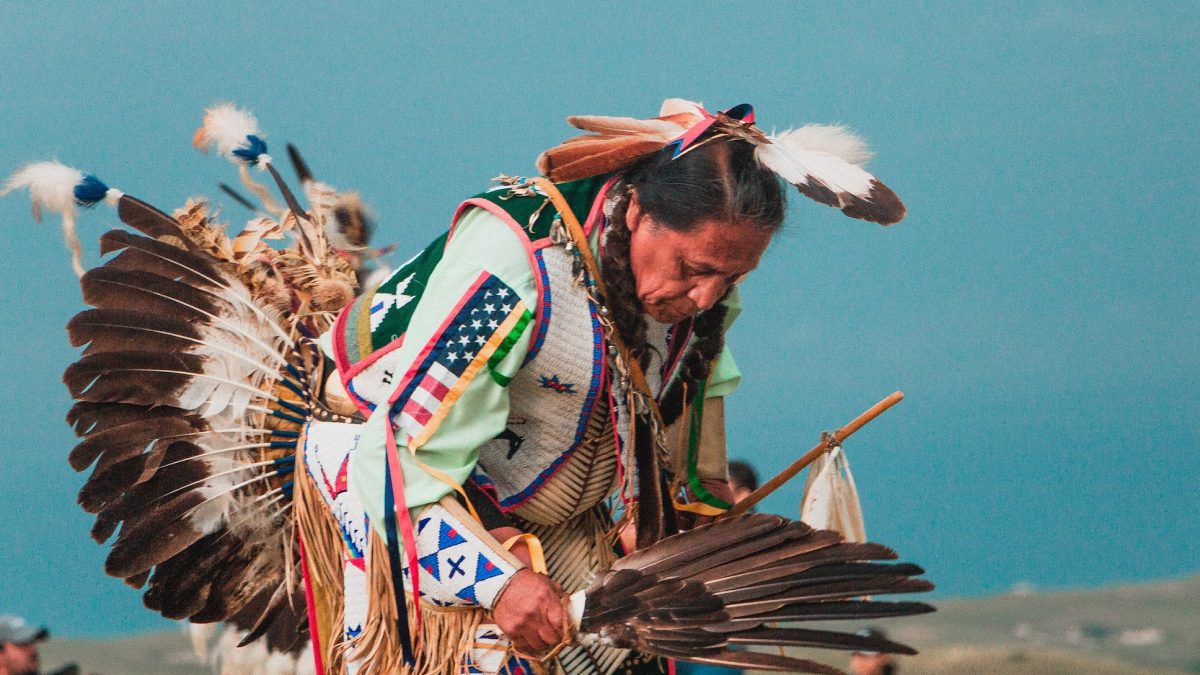Figure out Who Lived Here Before You Arrived
{A Written Practice}
Figure out Who Lived Here Before You Arrived
Most of us are not the aboriginal peoples of the places we live
This work is a plea to modern society, and an homage to indigenous and traditional cultures. But I think it’s only right that before I begin to share my appreciation for indigeneity, I first acknowledge that I am a perpetrator of violence against the aboriginal peoples of the place where I live and, by so being, against all aboriginal peoples. This is because the way that I live dishonors their teachings, and because I continue to benefit from this perpetration in ways of which I am aware, and in ways that I do not yet fully understand, though I wish to.
I live in the Bay Area of Northern California, near a town called San Rafael, which unabashedly calls itself the “City with a Mission.” This play on words is a reference to Mission San Rafael, part of the trail of Missions established in 1769 by the Spanish crown and padre Junípero Serra, in what was then Alta California, in the Province of California, New Spain. The place where we live, called Terra Linda, is part of a land grant of an entire valley, gifted to the Manuel T. Freitas family by the Spanish crown en masse. Here, said the King of Spain, this belongs to you now. It mattered to them not at all that there were people already living here. The site on which my home is built is unceded ancestral territory of the Coastal Miwok people, who lived here for 500 years before the Spanish colonizers arrived. Across the Bay in what is now the Fruitvale district of Oakland is the Peralta Hacienda Historical Park, site of the Peralta Hacienda, which was the first non-indigenous dwelling in the Bay area. Originally an adobe house, it was replaced in the 19th century by a Victorian dwelling that still stands. In this six-acre park in the heart of the Fruitvale neighborhood, in Oakland, which is at present rapidly gentrifying, I heard church bells and gunshots in a five-minute span on my first visit. The first time I conducted a mindfulness training at this place, I didn’t really know the history, and yet I was seized by a grief so primal and violent it almost drove me out of my mind. At the back of the property there is a creek, and a stand of mature trees. I couldn’t understand why, in my dream that night, it appeared to me as a portal to hell.
As I began to learn the history of the place, I discovered that it is Ground Zero of colonization in California. I evoke the Twin Towers here with intent. The Hacienda is the origin site of a history of massacres in Northern California. It is the location from whence was established empire in my neighborhood. The Peralta family was granted 44,800 acres (70 square miles) bordering the San Francisco Bay in 1820, stretching from what is now the town of El Cerrito to the town of San Leandro. They established their family home on the site that today is the historical park. This is unceded territory of the Lisjan/Ohlone people, who have lived here for 2,500 years. The myth in the United States is that indigenous people lived here. Past tense. It is not true. They live here. Now. They always have. It is not in the past. In the Fruitvale neighborhood of Oakland alone, there are people from 176 tribes. This is still indigenous land. At no time did it ever stop being indigenous land. Like all land on Mother Earth. The history of this land is that the country we (white people- we can’t say Americans, because the indigenous people here are the Americans) established was laid down over the civilizations that were already here. In Berkeley we paved over the indigenous burial grounds. We made roads across the bones of the indigenous ancestors buried here: our brothers and sisters. We set a country on top of another culture that never surrendered and that we cannot extinguish.
The sovereign Kingdom of Hawa'ii was annexed by the United States in 1898. Lahaina, the seat of governance on Maui, was filled with such a complex of inland waterways that it was known as the Venice of Polynesia. This civilization was fed entirely by food from the islands– fished and grown there. Today, 90 percent of the food on the islands arrives on container ships. If they stop running, the islands will be out of food in three days. On the eve of the annexation, the Hawaiian Queen Liliʻuokalani conducted a funeral ceremony for the Kingdom of Hawa'ii.
Not only did we take the land, but we do not acknowledge it. What is more painful? The theft, or the denial that it ever happened? Anyone who has ever been gaslit knows that the trauma comes when someone makes you feel crazy for being in reality. The term refers to a film in made in 1944 (Gaslight), about a man who manipulates his wife by raising and lowering the flames in the lights, and convincing her that this is all in her mind, until she thinks that she is going crazy. The United States has not yet, as of the writing of this volume in 2020, issued a formal declaration of acknowledgement to the Indigenous people of this country, that it is built on stolen ancestral land. To do so would be tantamount to acknowledging that the founding premise of this nation is a myth, a falsehood, a lie. And yet, of course, until we do acknowledge this, we will never heal this part of the primal spiritual wound in the birth of this nation, and it will never represent what it purports to stand for: liberty, equality, and justice for all.
To quote James Baldwin, Not everything that is faced can be changed. But nothing can be changed until it is faced.
Truth in history is important, individually, to repair trauma, and collectively, to repair social trauma. Until we admit the truth, in our families, we can never heal. If father was abusive, until we acknowledge this, it is not possible to heal. Secrecy protects the guilty from consequence as much as from healing. In this way it is a double-wound: it freezes the victim, and it prevents the perpetrator from taking responsibility. And yet, love and justice are inter-twined. As Martin Luther King Jr. reminds us, Love without justice isn’t love. Justice without love isn’t justice.
Just as we have to tell the truth in our families to heal our personal trauma, we have to tell the truth in our culture to heal the cultural trauma. Because victors write the history, the stories we are told are partial at best, lies at worst. They aren’t history; they are propaganda. In California, one of the bloodiest states in America, truth in history would likely include a Museum of Genocide. It is convenient for us to vilify the Nazis—I say this as a person of Jewish ancestry–while ignoring the genocide of Indigenous Californians enacted by our ancestors here.
After the Lebanese Civil War that raged for fifteen years, during which there were a number of massacres, there was an effort made, largely by Lebanese and Palestinian artists, filmmakers, and architects, to document this history. When my wife and I lived in Lebanon in 2000, we visited a nightclub in Beirut that was built on the site of a massacre, with full and intentional awareness. The club is underground. You park in a circle around it. Its footprint is circular, in the shape of a helicopter landing pad. From high above, it looks like a dark target, a disk-like crypt. To enter the club, you descend a flight of stairs: it is entirely subterranean. You can’t see in except through a strip of horizontal window a foot-wide, at head height. So, looking in, the first thing you see, is what appears to be a collection of disembodied heads floating around. The inside of the club is filled with purple light. The chairs are in the shape of coffins. I bring your attention here, to this place in Beirut, at this moment, to remind us that it is possible and necessary to grapple with the past, to struggle with our collective history creatively. This club is a living monument, a memorial that forces us, through its design, to confront the past.
What would it look like here, in California—a state that I call my home, a state that I love—to turn toward the truth? There were more than 150 massacres of Indigenous peoples here, and they are presently unmarked. A Wikipedia entry on the California Genocide contains an incomplete list of 32 that are documented. It reads like this: 1864. Oak Run Massacre. California settlers massacred 300 Yana Indians who had gathered near the head of Oak Run, California for a spiritual ceremony. For a ceremony! It is no different than black worshippers gunned down in church. How unbearably shameful.
I write these words with blood on my hands, the blood of my brothers and sisters. Some of you who read these words, who identify as white, may find yourselves thinking or saying, But Gabriel, you didn’t do that. That happened long before you were born. But what I want to say, especially to those who are white, is that while that may be true, I still benefit every day from what took place. We benefit daily. The house I “own”—and I use quotes because it seems impossible to own a house on stolen land—is built on the land grant I referred to earlier, the grant to Manuel T. Freitas, gifted to his family on Miwok land. At the present time there is no marker anywhere in this county to tell us who this land really belongs to. And yet, the Native people continue to remind us: the land never really belongs to us; we belong to the Land.
Because the purpose of this work (the work of Restorative Practices) is to elicit not merely moral outrage, but skillful action, we must pivot our attention from acknowledgement to reparations. Let your outrage drive skillful action. When I steal something from my brother, he doesn’t want me to merely acknowledge the theft, although that’s a start. We’ll never have even a hope of reconciliation until that happens. But the reality is that he’d like me to return to him what I stole. This is what reparations are—no more, no less.
Photography: Stein Egil Liland | Licensed from Pexels.com, used with permission.


